I picked up my packed sled, and my heart sank. “It’s too heavy!”, I exclaimed. Jill tried to console me “It’ll be fine. It’ll glide well on those trails and you won’t even notice.”. Still … it’s been the first time that I’ve actually packed everything into that huge bag. I’ve made lots of last minute changes. And I didn’t follow through on my plan to organize the sled smartly either. I felt unprepared and had battled some weird hip flexor pain the previous couple of weeks as well as pain in my right achilles, both of which could easily be a huge liability in this adventure. I had little training time on snow, and I knew how much more ones tendons are taxed by this terrain. I had a distinct feeling of impending doom … nothing good could be in store for me.
Pre-race dinner was spent discussing gear and strategy with Geoff Roes who attempted the ITI for the third time (second, to be fair, since one DNF was due to a severe cold already present at the start – -30F quickly turned that into severe bronchitis …) and Joe Grant who had finished Susitna a week earlier. Despite the difference in our capabilities, there was a lot to talk about. Turns out Joe and Geoff are really cool guys with a real love for running – they just happen to be a lot quicker at it than me when they do it. At least Geoff didn’t go superlight either on this try, with the main objective to finish the race. My take was that if he finished, he’d win, despite his conservative approach. As usual I was right about that one. I also cautioned Anne – fruitlessly – to not win the woman’s race so she wouldn’t get a free entry for next year …
After a good night’s sleep in a hotel in Wasilla, a decent breakfast and short drive to the start, we were ready to go. My sled was surely the funkiest looking amongst all of them, though a Canadian with a 60 lbs sled beat my estimated 44 lbs packed weight. Anne, on the other hand, clocked in at ~30 lbs. I was envious. The night before I had visions of the start happening and all the competitors moving away while I stood there pulling against my anchor, unable to move. Oh, pre-race nerves.
And then just like that, we had started.
The Wall
To my delight, I was able to keep up. I even walked and chatted for a few miles with Geoff, who was taking it decidedly VERY easy, showing impressive restraint. The trail was so-so, a bit punchy but you could shuffle. I was anxious to stay within people’s sights at least until the Nome sign, after which I thought I could follow the Susitna course to the Yentna river easily. The temperatures were pretty warm, I believe almost in the 30s. The valley had gotten a snowstorm warning the night before, but in the morning our car had only minor snow buildup – so maybe the trails were still in top shape like they were for the Susitna. Or so I hoped. After about 6 miles, after a nice chat with Rick Freeman, who was planning to go to Nome, I decided it was time to give snowshoes a try. The trail had gotten just punchy enough to be annoying and make my legs ache, and I thought the stability of snowshoes would prevent premature issues with my ankles. This improved things considerably … however the trail kept on getting worse. I finally caught back up with Anne who also donned snowshoes, and I did my best to keep up with her. After the Nome sign, the trail started to deteriorate further. It was now significantly more strenuous to move. However, we hoped to catch a cut-off trail around Flathorn lake that would save us a few miles, and also make for easier going through the woods. Going was frustratingly slow, but I figured once we got to the river, with its massive snowmobile traffic it would be ok. Oh how naive.
Anne and I emerged on the slough that would lead to Flathorn in the dark. The trails now seemed to be freshly broken by the people before us. My sled, due to its width, didn’t fare well on that terrain, causing lots of drag and even worse kept tipping on its side a lot. We first tried to spot the cut-off by going straight across the slough, but it became apparent within a few hundred yards that there was no trail, and others had simply turned around. We decided to look for the cut-off a bit further down. We went back to a bad trail that led onto the slough. Following it, we soon came across another turn-off heading up onto ground via a steep bank. However, within another few hundred yards Tim Hewitt and Geoff Roes and another person came towards us – “There’s no trail. It’s hip-deep.” Tim explained. We turned around to follow them onto the Lake.
Once we got to the lake, there was no apparent trail. We could see headlamps in various directions, some to the left, presumably from bikers taking the gasline trail, some straight ahead far onto the lake (which seemed rather dangerous). We decided to keep relatively close to the shore, which was where the Su also had its course. A biker – Phil Hofstetter – came towards us, exclaiming he could not go on, and we took the lead, having a better chance with our snowshoes, and Phil followed us. We tried to follow snowmachine trails, but only faint ridges in the snow indicated the possibility of a trail – going was tough, skinking in knee-deep – however off-trail was even worse. Once we got to an airstrip we lost the trail altogether. Tim simply headed out in the generally right direction which I confirmed with my GPS, and we took turns breaking trail until we finally got into a very bad trail that had presumably broken by bikers. Bike trails unfortunately don’t do much for snowshoeing – they’re too narrow, with deep holes from the boots and a shallower soft tire track – making for some very awkward going. My sled dragged like crazy and I was working close to my max for a lot of the time. After a few hours we finally came to a swamp and could spot the trail marker which would lead the way to the dismal swamp. After following more false trails, we finally got the direction right. We still followed a few bikers, and soon we overtook them. It was the lead group, led by Pete Basinger. They quietly stepped aside while we quietly passed. The swamp was a horrible mess. It’s wide, without a well defined base, and we kept taking turns breaking trail with a variable base. Finally we got close to the Wall of Death that led onto the Susitna river. Given it was now very late, like 4am or so, we figured we could as well bivy.
My feelings about the trail at this point were strange – on one hand, I was in an almost silly mood about the incredibly slow and strenuous race, but because everyone was in the same boat (though I would think that Geoff operated at a significantly lower percentage of his capacity than me …) it did not really phase me that much yet. Somehow I believed if the river was better, this would just be one big fun adventure, something to tell your friends later. Despite being quite exhausted, I felt ok. I sent a quick message to Jill on my sat phone: “bivy wall death w anne geoff david and more were lead group breaking trail overtook pete”. I though it was pretty cool at the time.
Temperatures were not too cold, probably above 0F for sure, possibly even above 15F. The bivy was warm but everything was sort of wet, and I was sweaty. I somehow didn’t have an easy time breathing. After two to three hours, Anne exclaimed that she would get going. I had not gotten much sleep, and I didn’t feel comfortable so I figured I could go as well.
Emerging on the Susitna, my heart sank. The river was just as bad as the swamp, and moving was very slow. Anne and I took turns in the lead, following a badly broken trail. Soon enough Geoff caught up with us, and we once again overtook the lead cyclists who had moved on earlier. The bikers looked shattered and broken. This was supposed to be the easy section. Geoff joked that at this speed, it would take us a month. We started talking about dropping out. Geoff’s thermometer read 35F, which meant that trails wouldn’t improve either due to the warmth.A water stop turned out to be only moderately productive, melting snow took forever and I caused big spillage with my stove. My morale was on a steep downward curve – fatigue, slow going, and I felt utterly inadequate using my gear. My sled was a mess and one ziploc bag of pringles had burst and just added the icing on the cake.
After the water stop I fell behind Anne, Geoff and Tim and even Dave and Andrea, and continued onto the Yentna – which should have been the highway of the race. But same thing – not a single snowmachine had come through or was to be heard, and the trails were abysmal. To make things worse, my sled tipped over every two to three minutes, and i had to undo my harness to set it upright. I wanted to sit down and quit. Right there. Sometimes I would drag it on its side for a few hundred yards just to spite it, but the joke was on me anyways. I felt sorry for myself, and stupid at the same time.I was alone now, and my morale had become very low. I could no longer envision this being doable physically, I hated the thought of chasing cut-offs and the whole adventure did no longer feel fun, it feld infinitely tedious. I was on the stupid rivers on a course where I had been before, mere 25 miles straight line from Anchorage, there was no real danger (though that of course was not true – snow can cover up nasty overflow and cracks …), just tedium. I felt it was unfair, silly and stupid to push on the Susitna course for a few days just to time out anyways. My mind was in a very bad place. I finally took out my sat phone and called Jill: “I am not sure this is doable for me. I think maybe I should quit. My gear is not adequate. This could be dangerous.”. I had a compelling, rational reason to drop laid out for myself. Still, it felt good to talk to Jill, get her support. Despite all of this I knew I was not actually going to quit. Deciding to quit is a measure of last resort for me, a mental crutch that makes the task at hand more bearable. It allows me to more effectively break up the task into small pieces. I could always defer the quitting until later, the next checkpoint. If it’s one thing I’m good at it’s procrastination. That said, I wondered how I would recover from the physical exhaustion I felt at this point. After an eternity I reached Luce’s. They’re not a checkpoint, but open for business and a welcome stop to refuel and relax. Geoff, Tim, Anne were there, and a lot of bikers came in later including Pete Basinger and Jeff Oatley. I explained to Geoff and Tim that I probably shouldn’t continue on. They didn’t have much energy to argue. Everyone at Luce’s was shattered and tired, yet sort of giddy in disbelief at the slow progress we made.
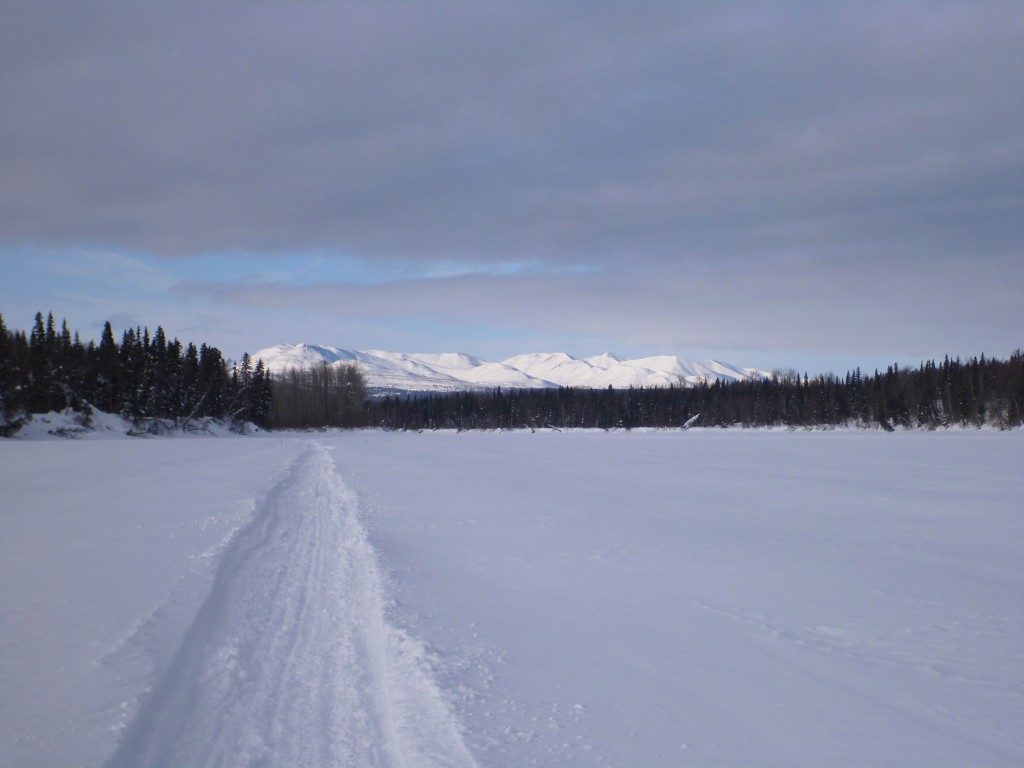
Beautiful scenery, bad trails. En route to Skwentna.
After lots of food, I felt somewhat refreshed. I left with Shawn into the darkness – we planned to make it to Yentna, the first checkpoint, and then sleep a bit.The trails had seen some snowmachine traffic now, but were still pretty soft. I soon learned that for a snowmachine to make a good trail you need time and cold temperatures, optimally below 10F – so the trail can “set up”. Otherwise it’s a powdery mess, uneven and awkward to walk on – which is what we still faced. After an initial 1.5 mile detour (oops, but the trail was sooo nice), we were on the way to the station. I pulled a bit ahead of Shawn, and reached Yentna, which was considerably farther than I remembered, at 10pm. Yentna station is homey, but due to the fact that everyone was there at the same time – bikers and runners – quite miserable and cramped. Additionally the upstairs sleeping rooms were very hot approaching sauna status, yielding again little sleep.
At least all my gear dried out, and at 3:30am I left, just a few minutes behind David Johnston and Andrea. Skwentna was just about 30 miles away, and I hoped for finally better trails. I started out without snowshoes, but after about 10 yards it was clear my hopes had been too high – on they went. Instead of better trails, I found more of the same – soft mushy stuff that took lots of energy to move on. Going was slow, and after only 15 miles I was completely exhausted again. I basically expected this to keep on going at least until Fingerlake – they had reportedly gotten almost no snow, so that was the only positive data point. I knew Shell Lake had been snowed on a lot as well. My fatigue was very disheartening. I hated my sled. I hated my snowshoes. I hated the Yentna. In addition, I had started to get some rather disconcerting gastrointestinal distress, which I attributed to a combination of the belt and the greasy food I had eaten at Luces and Yentna. I was able to compensate since my sled harness system allowed me to undo the waistbelt and only use my shoulders to pull – one of the few things that turned out very well about the sled. Mercifully about 12 miles before Skwentna a couple had made a rest stop for weary racers, and just as I pulled in, Dave and Andrea came out. They were in good spirits (Dave is always smiling) and told me to rest up and enjoy the soup and cookies! The rest was indeed heavenly, and I stayed for a good hour or more, having hearty soup, homemade cookies (with a baggie to go), coffee with chocolate and a good talk. It’s hard to be in a bad mood when met with such open hospitality, and I left the cabin in better spirits.Back on the Yentna going was still slow despite a large group of trailbreakers coming through (as I said before … you need time + cold temps to make a good trail). The weather was now very good, and after a while a plane buzzed me, and I recognized my friend Dan Bailey’s plane – with Jill in it! They flew by me multiple times yelling and waving. The remainder of the way to Swkentna was slow but uneventful, with no issues but a developing toenail blister (due to the snowshoe) and increasing fatigue, possibly also related to my stomach issues. About two miles from Skwentna I felt my fuel had run out, and I had a terribly hard time dragging myself into the checkpoint at 6:20pm – only 12 miles from my last rest. I felt I barely made it to the checkpoint. But by
now, I was determined to keep moving. I was still ahead of the cut-off.
At Skwentna, I got a great surprise – Jill had been there earlier with Dan and had left me a small note, telling me she was proud of me and she loved me. It almost brought tears to my eyes, and filled me with deep affection for Jill, and renewed resolve to see this through. Wary of greasy food I had a salad and some cake for dinner and slept a few hours (in my own room, very comfortably) and left with Andrea and Dave at midnight to make our way to Fingerlake, with a stop at Shell Lake. The trail leaving Skwentna led us across the airstrip, a beautifully hard-packed and prepared surface which had allowed Dan to land his wheeled airplane earlier. It was beautiful and cruel at the same time – a quarter mile of pure bliss, efficiency of movement which I would not feel again until the last 12 miles of the race. A cyclist, Dario, overtook me on this stretch, something that I was quite excited about, ironically (as it turns out the cyclists were equally excited in the opposite direction – aka demoralized – by our overtaking). Good for bikes, right now, meant good for us. Sadly, I overtook him back only 20 minutes later. Reality had come back. Soon enough I emerged on the endless seven mile long swamp crossing that led to the shell hills. I was glad it was dark because this stretch goes on endlessly, and the trail was in no better shape than before, as most open areas were prone to be windblown.
The hills before shell lake after the swamp turned out to feel about twice as long and high than when I did this with Jill just a few weeks back – I actually struggled surprisingly (well may not) much with the climbing, which shocked me since I had looked forward to a change in terrain. Moreover a moose had decided this was its trail, and had walked all the way up the hills and halfways back down, leaving the trail in a messy state which can occasionally be challenging even with snowshoes – those animals make huge holes! I never saw the moose, but it must have been close since Dave and Andrea did not see any mooseprints in on the trail …
I got to the shell lake lodge late in the night, probably at 4 or 5am. A short nap and a big pancake breakfast later, Andrea, Dave and I were on our way to Winterlake. I had long been excited about to reach this stage of the race, though I envisioned getting here a lot less fatigued and a lot sooner. I now entered unknown terrain – and we got closer to the mountains, breathtaking views and the “real adventure”. Fingerlake was around 20-25 miles away, which didn’t seem so bad. As it turns out, those miles would be amongst the toughest miles for me in the race. It was a beautiful but incredibly windy and quite cold day. The wind really was a pain, you have to be careful with your clothing, and getting food or water was an ordeal. But worse, it meant that the trail was mostly completely blown in with snow. I could see sled tracks on the original trail disappear under the blown in snow, then reappear later in a wind-shaded section, taunting me. The uneven rapid change between deep soft snow and semi-hard trail made it near impossible to find any rhythm. When I fell just 5 minutes behind Andrea and Dave their tracks were already almost gone. It was slow, and very tough going. Every once in a while the views of the Alaska range and even Denali lightened my mood and made me take pictures, momentarily lost in the pristine and immense beauty of our surroundings. But mostly all I wanted was to get to Fingerlake. And the more you want something, the longer it seems to take. In addition, a new problem had arisen – some small muscle in my back started hurting from pulling my sled. It was an infuriating pain ranging from a tickle to strong enough that I could barely breathe. It was somehow between my ribs in a place where I just couldn’t seem to reach it, and I could not figure out how to stretch it out. It just kept hurting and driving me crazy … I even took off my harness and pulled my sled with my hands. This made time go by even more slowly …
Finally, a few miles before Fingerlake, the trail crossed one lake after the other, and for each one I thought “that might be it”, but my GPS showed the truth … yet it was unbelievable how long we took for those last few miles to the extent of my questioning the GPS. It was one of the few sections of the course where I really lost my cool and started to get angry and irritated at just how slow this was, I think I even cursed a couple of times when small things bothered me. We reached Fingerlake at 7:15pm, 19 hours after leaving Skwentna, for an average speed of 2:08 miles per hour. We were about 130 miles into the race, I was completely shattered, and we were just a little more than a third of the way. I was excited to embark on the real journey, but at the same time while I wanted to continue, I was more unsure than ever if I could actually finish this thing. The trail was supposed to get better, though “5 feet snowdrifts” had been reported on the way to the next checkpoint … and it was also supposed to become much more challenging, at least in “normal” years.
Stay tuned for part 2 … with new challenges, more mountains, longer miles, lower temperatures and even more whining!


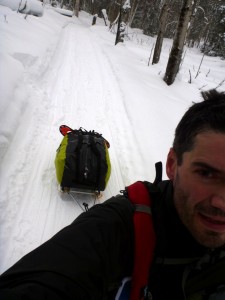

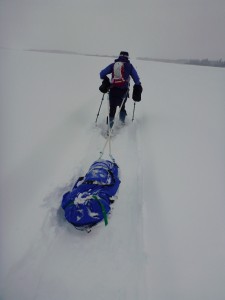

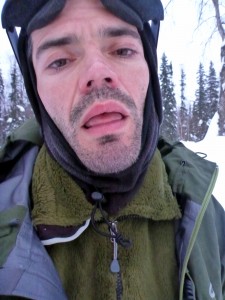



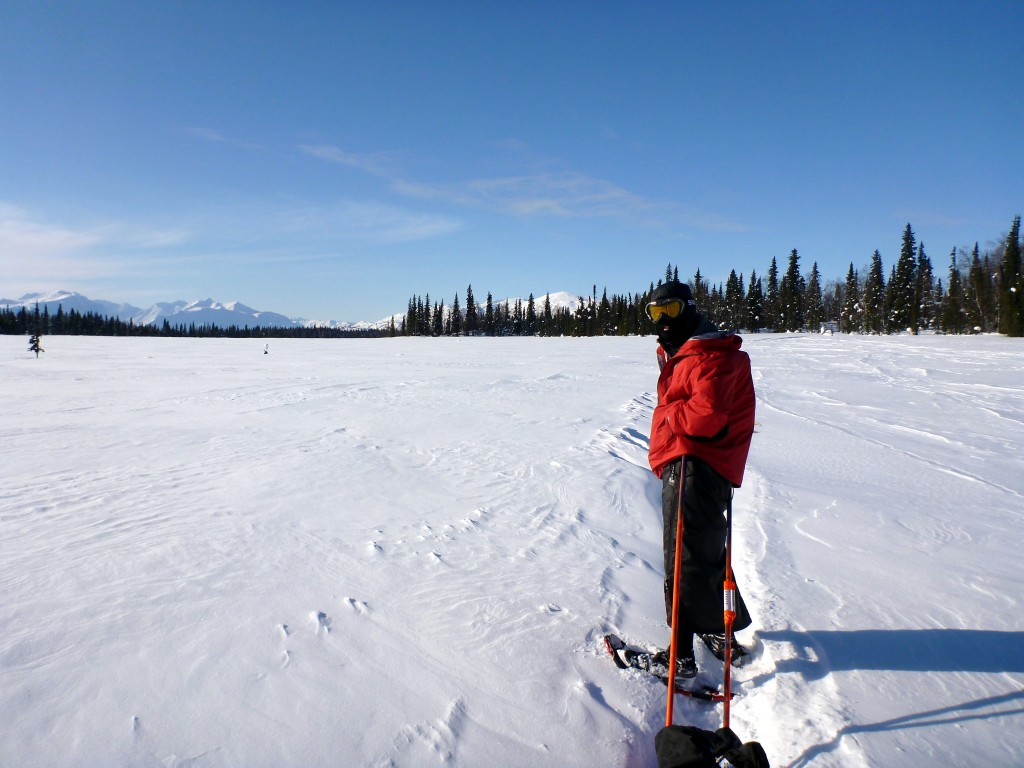

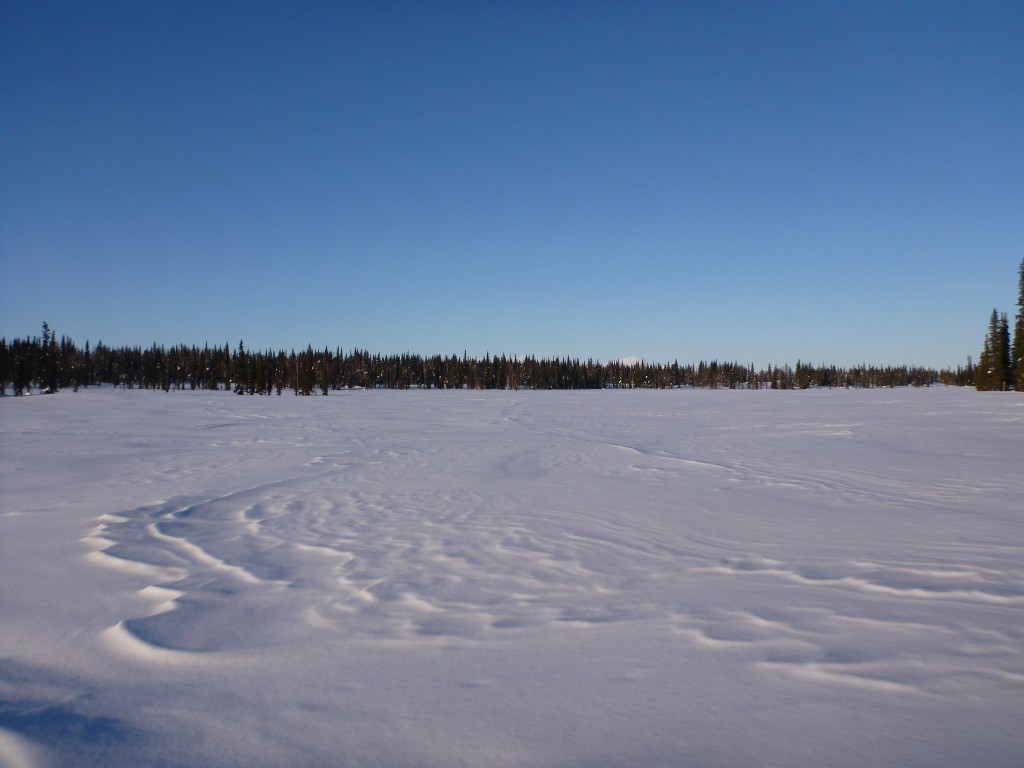
Thanks for the writeup,I look forward too reading part 2.
Nice race report. It’s very detailed and descriptive but also funny as hell. And the map rocks.
OMG I just read the picture so far and it’s awesome. I can’t wait to go back. Mancakes FTW.
Good stuff! Can’t wait for #2.
Hi Beat, nice to read your report…. it ‘s me the “other guy” you mentioned 2 or 3 times in your report :)))
Happy for you you made it to the end… as you may know when you left Nikolai I went back to sleep for another 2-3 hours… I guess my body was telling me soemthing already. And When I left later with Rick I had to turn back after about 2 hours with major stomach issues. Could not keep any food , any fluid and already puked the pasta we had in Nikolai.
A lot of frustration to have to stop so close of the final line.
Took me about a week in Anchorage to more or less heal and been able to eat something other than just crackers.
Glad for you you went through. It was indeed a tough year,… no so a race but a real adventure.
Curious to read your part2… always interesting to read what the race looked like for the people the share the “trail” :)) with.
Happy trail, Frank
Hey Frank! Of course I remember you well, but the first half was very muddled – I really didn’t realize it was you then. But I haven’t forgotten you so quickly 😉
Real bummer this stomach stuff hit you, but I’m with you … in that environment there’s no place to try to push your luck – we didn’t see a single person until we hit that road (which you probably wouldn’t have taken anyways due to the new snow). I don’t need to tell you that making it this far was a significant feat in its own, and you basically got all the best parts of the adventure anyways. Hope I’ll meet you soon again on the trails, it was fun talking with you (the few times i could keep up!)
Wonderful writeup, and congratulations on making it to Mcgrath. While pushing my bike to Skwentna I keep thinking how much more fun it would be to walking rather than pushing a bike..